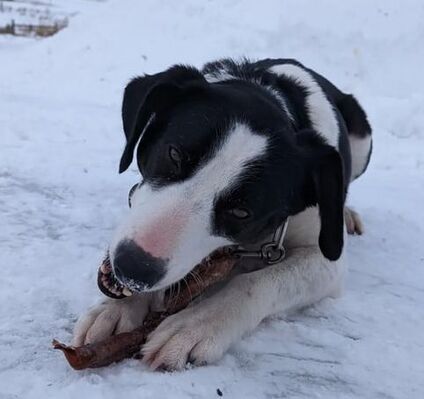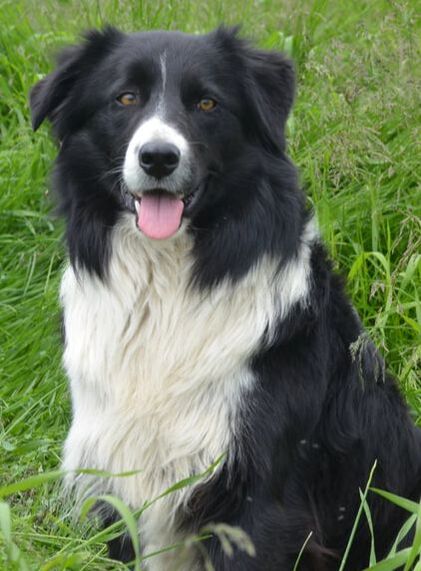
Getting started
The ease with which your pet transitions to raw foods will vary based on many factors. Most young, healthy pets will transition seamlessly, while older animals, finicky eaters and those with underlying health conditions may require some increased care and support. The following guidelines will assist you in safely and successfully changing your pet’s diet to nourishing raw foods:
Our number one rule of thumb is go slow. Plan on changing your pet’s diet over a week (or more) to allow their digestive system time to adjust. Start by slightly reducing the amount of their regular food and adding a small amount of raw (teaspoon to heaping tablespoon depending on the size of your pet). Do this for a couple of days to help your pet get used to the flavor and texture of their new food. If your pet accepts it and there are no digestive upsets start to feed raw meals in the morning and their regular food in the evening. It is important to separate these meals, as the transit time for raw meat through the digestive tract is quite different then dry kibble. Many pets will transition quickly and consume the raw food eagerly. Monitor bowel movements to help determine how well their system is adjusting. Stools should become small and firm. If they are loose, profuse or fowl smelling, or any vomiting occurs, the raw food should be introduced more slowly. When your pet is consuming the raw food readily and is having regular healthy bowel movements, you can begin feeding raw foods for both meals.
The ease with which your pet transitions to raw foods will vary based on many factors. Most young, healthy pets will transition seamlessly, while older animals, finicky eaters and those with underlying health conditions may require some increased care and support. The following guidelines will assist you in safely and successfully changing your pet’s diet to nourishing raw foods:
Our number one rule of thumb is go slow. Plan on changing your pet’s diet over a week (or more) to allow their digestive system time to adjust. Start by slightly reducing the amount of their regular food and adding a small amount of raw (teaspoon to heaping tablespoon depending on the size of your pet). Do this for a couple of days to help your pet get used to the flavor and texture of their new food. If your pet accepts it and there are no digestive upsets start to feed raw meals in the morning and their regular food in the evening. It is important to separate these meals, as the transit time for raw meat through the digestive tract is quite different then dry kibble. Many pets will transition quickly and consume the raw food eagerly. Monitor bowel movements to help determine how well their system is adjusting. Stools should become small and firm. If they are loose, profuse or fowl smelling, or any vomiting occurs, the raw food should be introduced more slowly. When your pet is consuming the raw food readily and is having regular healthy bowel movements, you can begin feeding raw foods for both meals.

Helpful Tips
- Have a dedicated ‘raw’ container to thaw food in. Glass containers with lids work well as they are dishwasher safe and easily cleaned. Take out only as much as your pet will eat in a 24 hour period. Remove packaging and thaw in the fridge.
- Most pets will benefit from the addition of probiotics and digestive enzymes during the transition. Starting probiotics the week before introducing a new food can make a huge difference in how your pet adjusts. Unpasteurized natural yogurt and kefir are good probiotic options for animals not sensitive to dairy. Raw green tripe is an excellent source of naturally occurring enzymes and contains a number of beneficial bacteria. These may all be fed on their own or with regular meals. There are many options available from pet retailers, health stores and veterinary clinics. Speak with someone knowledgeable on the subject to determine, which is right for your pet. Animals with digestive issues can really benefit from these supplements over the long term.
- A short bone broth “fast” (24-36 hours of offering just fresh water and bone broth) can help prepare your pet’s digestive tract for a diet change, while stimulating their hunger. Bone broth is a nutrient dense superfood containing compounds which help nourish and heal inflamed joints, skin and damaged guts. Beyond that, it supports the liver, which is really important as many pets switching to a natural diet can undergo a detoxification (see FAQs). Avoid “fasting” cats (especially if they are overweight) and young animals (under 1 year).
- Essential Fatty Acids (EFAs) are an integral part of every cell in the living body. Many experts now agree that deficiencies, imbalances and presence of rancid fats in pet foods are contributing to a wide range of health problems. If your pet is itchy, has dry, flaky or greasy skin, and/or suffers from allergies, arthritis or any other chronic inflammatory condition they will likely benefit from the addition of EFAs to their diet. Since EFAs are fragile and degrade quickly it is best to add them fresh at time of feeding. Please note that “more” is not necessarily better with fatty acids. Small amounts can create great health benefits, while large amounts and imbalances created by adding the wrong fats can be detrimental over the long term.
- Remember, nothing is written in stone. Each pet is an individual. If you have any questions or concerns along the way, please seek assistance from a trusted Holistic Animal Health Care provider experienced in raw feeding.
For a printable PDF please click here: GOING RAW


